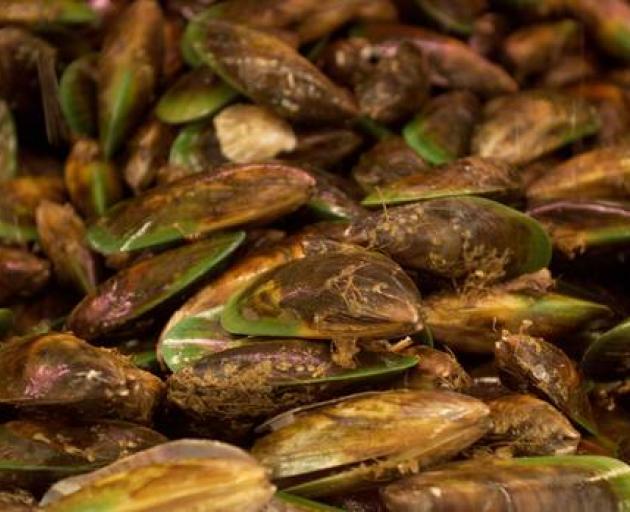Scientists are closely watching unusually warm waters around the North Island's East Coast - and predict "marine heatwaves" could develop near Canterbury and Otago within days.
Described as an extended period of extremely warm ocean temperatures at a particular location, marine heatwaves can last several months and cover thousands of square kilometres.
"Scientifically, a marine heatwave is defined when the ocean temperature at a given location is in the top 10 per cent of the temperatures typically recorded during that time of year for five days or more," Otago University marine scientist Dr Robert Smith explained.

Glaciers melted as some pockets of ocean off the South Island West Coast warmed to 6C above average, while elsewhere, mussel beds suffered cascading losses and vineyards saw early harvests.
While sea surface temperatures around New Zealand had hovered close to normal over much of the past summer, Smith said a strong marine heatwave developed during late February to the east of the country - and was still ongoing.
"This marine heatwave is currently impacting coastlines of the Wairarapa, Hawke's Bay and the Chatham Islands," he said, adding it had pushed temperatures more than 2C above normal at times.
"The event has been somewhat unusual in that it also enveloped much of the New Zealand subantarctic zone during March, which is not, given its name, an area one might typically think of as experiencing heatwaves."
In these ecological hotspots, warmer oceans could be disruptive for species of all kinds, from plankton and seaweed to marine mammals and seabirds.
"They may also have implications for regional fisheries, including those for pāua around the Chatham Islands."
As part of The Moana Project - a five-year, $11.5m collaboration aiming to make New Zealand a world leader in ocean-forecasting capability - Smith and fellow Otago researchers are working to get a clearer understanding of the heatwaves and their effects.
The project has also seen the launch of a free marine heatwave forecast system.
"At present, we are providing short-range forecasts for up to seven days, of where and when marine heatwaves are likely to occur, for selected coastal sites around New Zealand," he said.
"These sites include the Hauraki Gulf, Bay of Plenty, Cook Strait and Banks Peninsula. Whilst the present tool gives us a short-range forecast, we are looking at ways to extend these forecasts to a few months using machine learning techniques.
"This research will help us to forecast these extreme events with more certainty and provide warning to our important ocean industries and coastal communities."

Heatwaves could emerge relatively quickly, and be triggered by a range of factors.
"At a local scale, these factors include ocean currents that build up areas of extremely warm water, warming through the ocean surface from the atmosphere and reduced wind speeds that inhibit ocean mixing," he said.
"The likelihood of marine heatwaves is also influenced by large-scale weather and climate patterns, such as El Niño and La Niña."
Studies have indicated global climate change has also been a major influence, with heatwaves having become 34 per cent more frequent, and 17 per cent longer lasting, since the mid-20th century.
More concerningly, Smith said, the number of heatwave days has been growing by more than 50 per cent each year.
"Recent marine heatwaves have had devastating effects on marine ecosystems around the world," he said.
"For example, they have triggered widespread mortality of marine species, shifts in the abundance and distribution of recreational and commercial fish stocks and the need to restrict or close fisheries due to outbreaks of disease, or harmful algal blooms."
Over time, he said increased exposure of marine ecosystems to extreme temperatures may lead to "irreversible loss" of species or important habitats, such as kelp forests and seagrass meadows.
"Marine heatwaves are therefore a serious concern for our ocean life around New Zealand, that has evolved to thrive in cooler seas," he said.
"The impacts associated with marine heatwaves also pose a threat to aquaculture and fisheries, New Zealand industries worth more than $4b annually."
Scientists solving mussel mystery

Green-lipped mussels are an important aquaculture species in New Zealand, and a resource valued at more $300m a year.
While the aquaculture industry largely depends on wild-caught baby mussel larvae, or spat, it's still unclear which wild mussel beds supply it.
"Knowing the source of the spat enables the protection of spawning stock and in doing so helps future-proof New Zealand's mussel aquaculture industry," Moana Project director and science lead João de Souza said.
In their new study, Victoria University marine biologist Professor Jonathan Gardner and his team would pull together what he called a "unique combination" of sciences to reveal where mussel larvae come from, how they travelled, and where they ended up.
"In doing so we will be able to predict the movement of larvae now and under different scenarios of climate change."
With population genetics, samples of the collected mussels would be genotyped – a process that effectively provided a DNA fingerprint linking together different populations.
Microchemistry analysis, which involved using a laser to take a small sample of mussel shell, could also give a chemical record of the mussel's lifespan, and where it had travelled.
Mātauranga Māori offered local ecological knowledge that could help corroborate the location of the mussel reefs generating the spat.
Lastly, physical models of currents would be combined with biological data to predict and look at the movements of green lipped mussel larvae in the Bay of Plenty, where the first samples were recently collected from.
Further trips are planned to collect mussel larvae using "spat lines" - vertical lines containing spat-catching rope for travelling spat to settle on.
Once retrieved, any settled spat will undergo microchemistry analysis.
"While the Bay of Plenty is the current focus, we will also be sampling from several other areas, including Ninety Mile Beach which is where the majority of free-caught mussel spat is collected," Gardner said.
It's also hoped that the study, expected to take up to two years, will help combat invasive species, inform marine spatial planning efforts, and aid coastal restoration efforts.
Comments
While it sounds like great work is being done it is disappointing that the author seems so concerned with the economic impact on the fishery and aquaculture industries. Commercial fisheries have and are leading to "irreversible loss" of species or important habitats just as surely as increased marine temperatures are. We must do more to protect our oceans.












